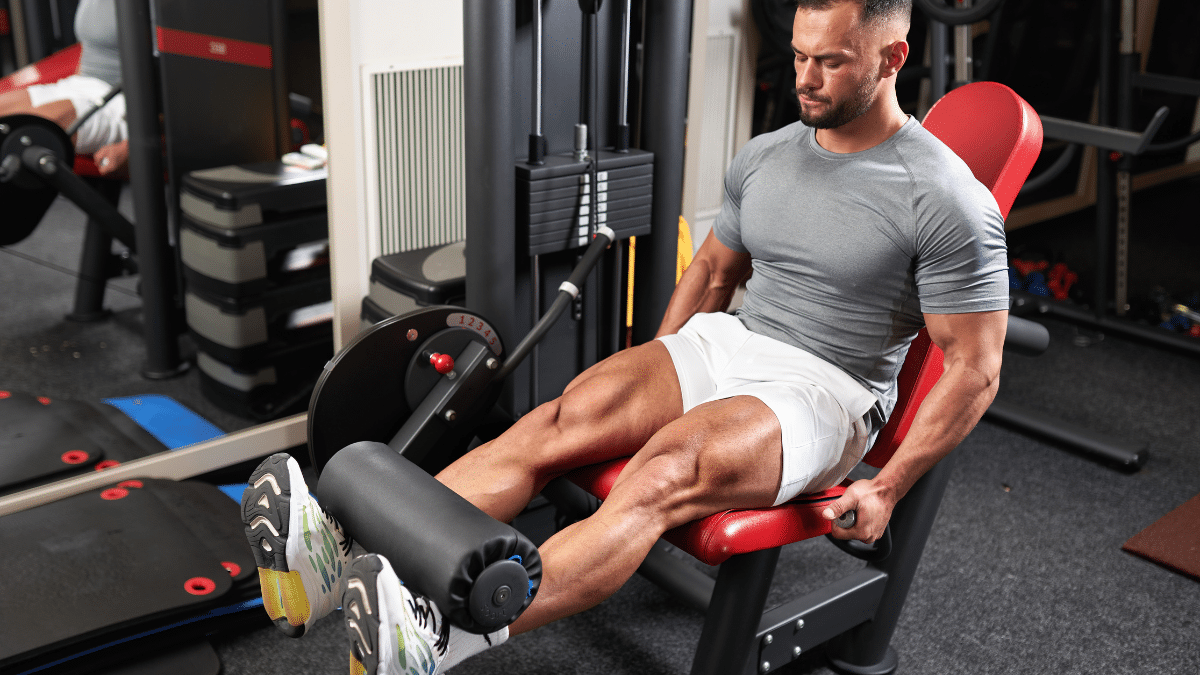If the people who introduced you to lifting had a background in strength sports, they may have told you that barbells are the best (or only) way to put on size and strength.
Fortunately, that isn’t what the evidence suggests.
A meta-analysis by Haugen and colleagues, published in August 2023, sought to compare the effects of free-weights vs machine-based training on maximal strength, muscle growth, and jump performance.
A total of thirteen studies were included and analyzed. Six of these studies involved trained participants, whereas the remaining seven involved untrained participants.
As such, the results from this meta-analysis should generalize reasonably well to both new lifters and lifters who have been getting under the bar for a while.
Common exercises in the “free-weight” groups included the back squat and bench press, whereas the “machine” groups often included the leg press, chest press, and various Smith machine exercises.
Here’s what they found.
First, with regards to maximal strength, gains in free-weight exercise strength were significantly greater in the “free-weight” groups.
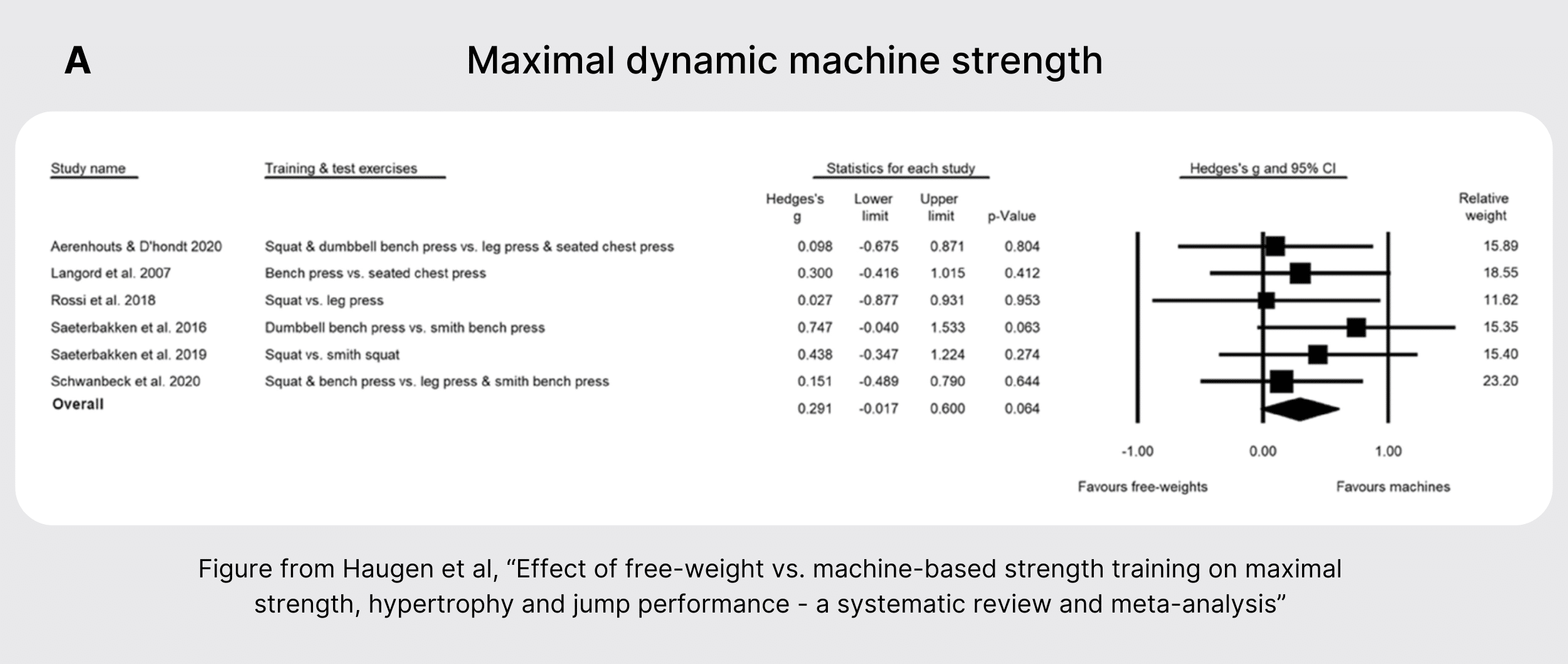
Conversely, gains in machine exercise strength were nominally greater in the “machine-based” groups, but this difference did not reach statistical significance.
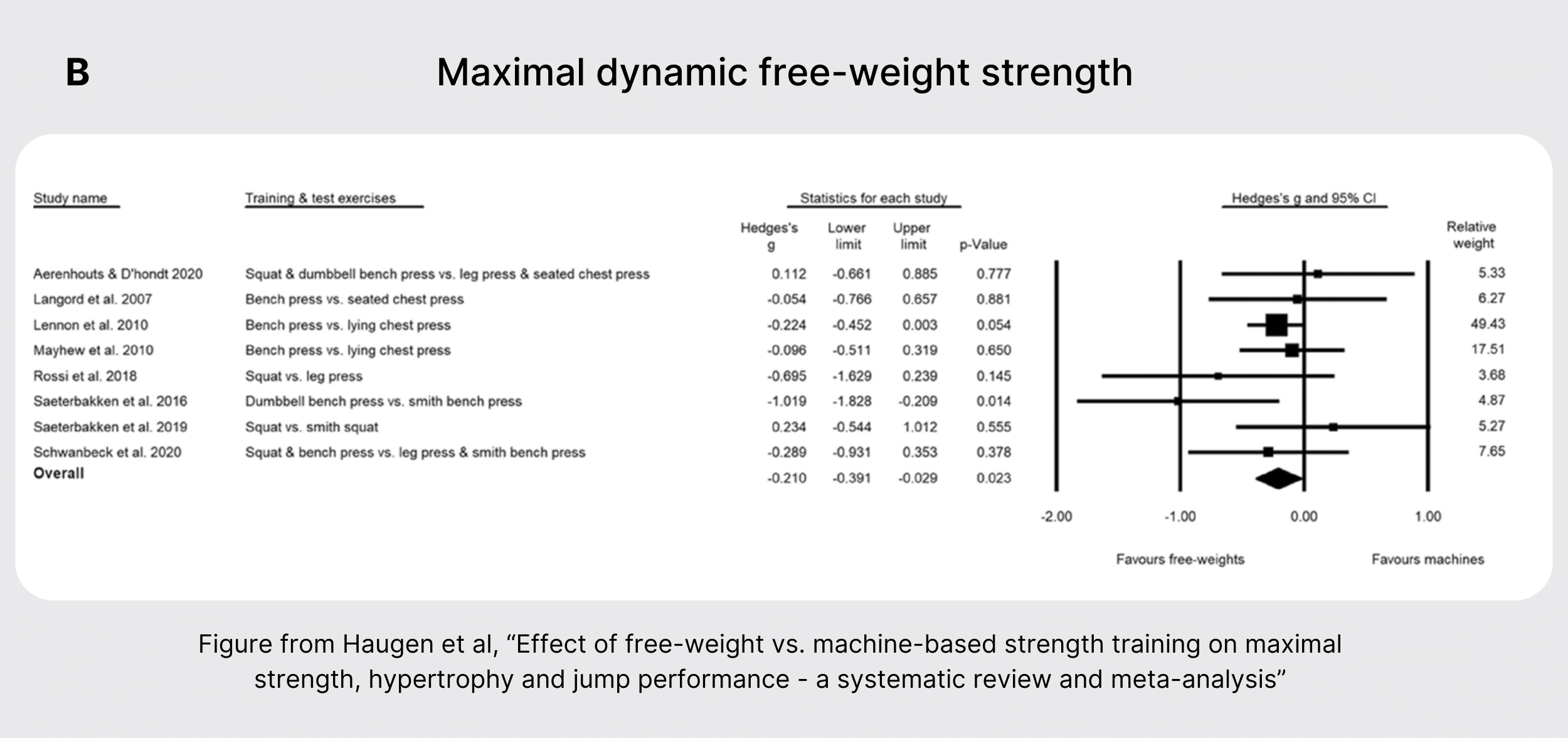
The reason why this difference didn’t reach significance may just have been due to a lower sample size; more studies included free-weight strength tests than machine strength tests (8 vs 6).
So, it appears that gains in strength are modality-specific. If you want to gain strength in a machine-based exercise, you’re likely better off predominantly training with machines. Likewise, the opposite applies: if you’re competing in powerlifting or any other free-weight-based strength sport, it would behoove you to predominantly train with free weights/barbells.
This follows the general principle of specificity. That said, the principle of specificity is oft assumed to always hold true. This data suggests that specificity does indeed apply to the modality being used while training for maximal strength.
Interestingly, no differences were found when it came to isometric strength, suggesting both machines and free weights are effective at improving overall or non-specific strength. Indeed, an isometric strength test performed on an isokinetic dynamometer is a pretty unskilled test of strength – and one that neither group would have had any experience with. This suggests that if you’re after general strength improvements, what modality you use probably doesn’t play much of a role.
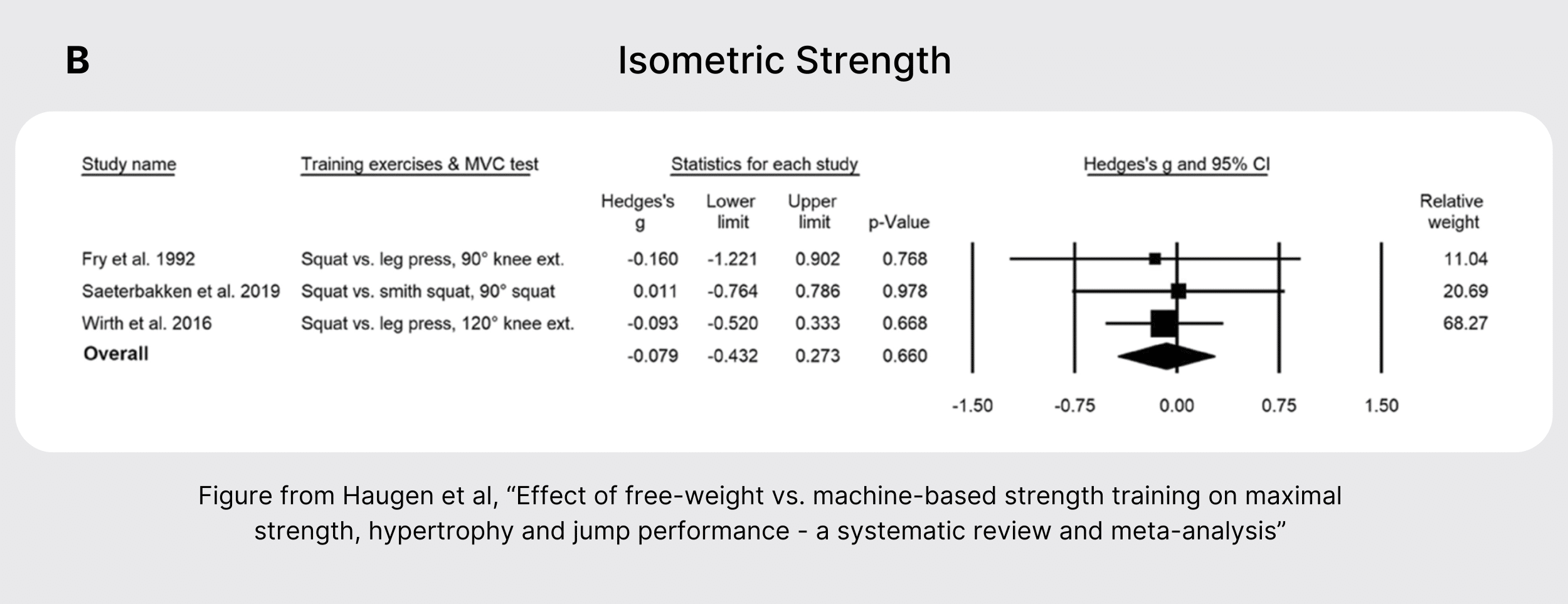
With regards to muscle growth, no significant differences were found between modalities. Therefore, if you’re after muscle growth, you don’t need to use free weights or machines, exclusively. In fact, the two may complement each other very well in an effective hypertrophy program.
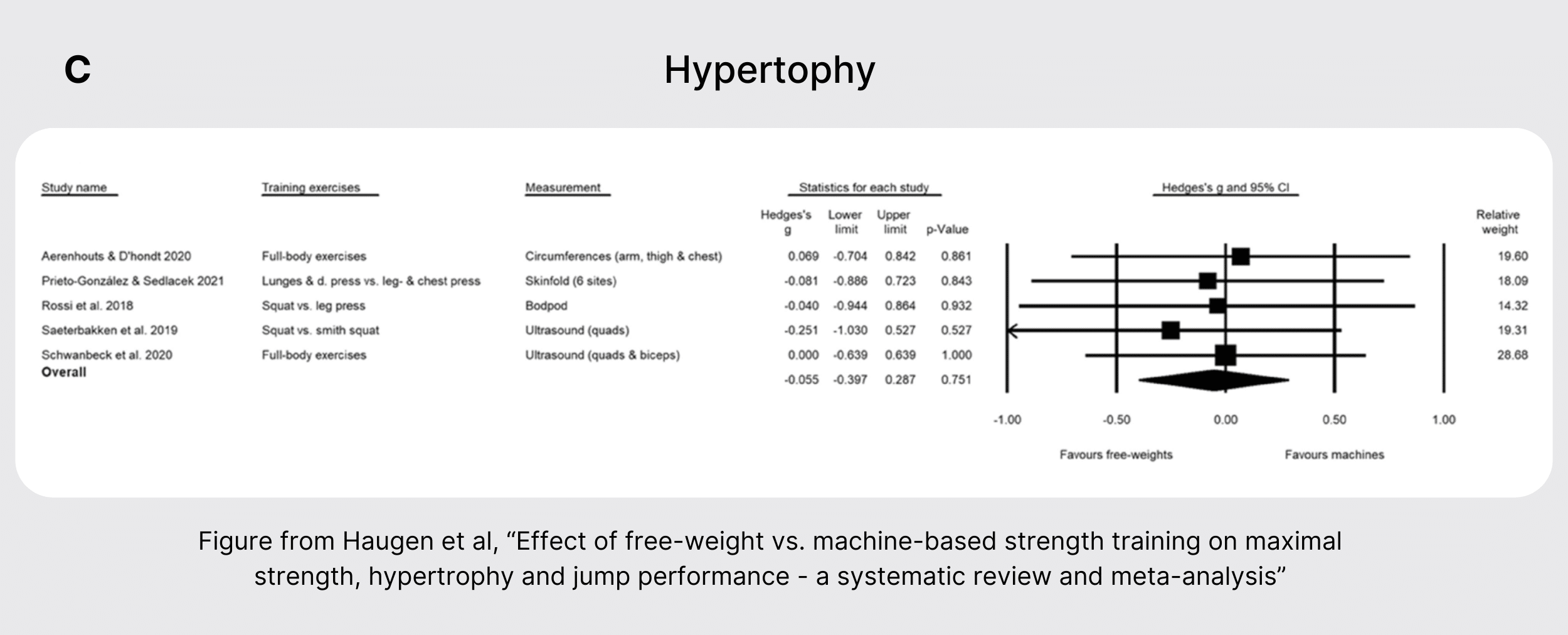
Interestingly, a common hypothesis is that free-weight exercises should result in greater overall muscle growth than machine exercises due to greater activity of synergist muscles, which has been documented (1, 2, 3). However, this meta-analysis doesn’t support that contention, since similar gains in fat-free mass were seen in both groups in all studies within this meta-analysis.
Finally, with regards to countermovement jump performance, no significant difference was found between free weights or machine-based training. However, the effect size estimate did favor the free-weights group. Upon removal of one study during sensitivity analysis (essentially seeing how results change when you leave one of the studies out), free weights did significantly outperform machines for improvements in countermovement jump height improvements. So, free weights are potentially a better option than machines if your aim is to improve your jump performance.

These findings are in-line with another recent meta-analysis on the same topic, which also found that strength gains were modality-specific, that muscle growth was similar between groups, and that “neutral” strength improvements were similar between groups.
Takeaways
Maximal strength improvements are modality-specific.
- If you want to get better at barbell lifts, use predominantly barbell lifts. The same applies to machine exercises.
Muscle growth is similar between machine and free-weight-based exercises.
- Machine and free-weight exercises may complement each other well in a hypertrophy program.
- If you prefer one approach (e.g. free weights), this gives you flexibility.
Improvements in countermovement jump were likely greater when training with free weights vs machines.
- If your aim is to improve jump performance, your training should probably include more free-weight training than machine training.
More from Milo
This was a guest article by Milo Wolf. If you’d like to receive more free e-mail research breakdowns to your inbox, sign up to his newsletter here.
Milo is also one of the coaches on the Stronger By Science coaching team. If you’d like to work with Milo to reach your training or nutrition goals, you can learn more about the coaching program here.

